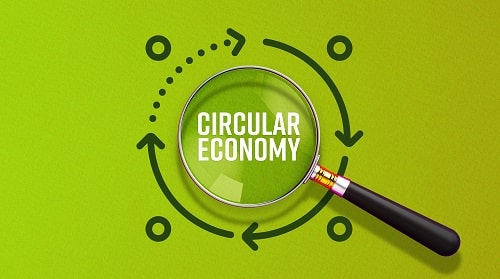Research suggests good indoor environmental quality can enhance the health, wellbeing and productivity of a building’s occupants, so it’s essential for building owners to improve areas like indoor air quality, temperature, lighting and acoustics.
Features
Why good indoor environmental quality can enhance wellbeing
Whether it is offices, factories, schools or hospitals, the buildings where we spend our time greatly impact our health, wellbeing, performance and productivity. Indoor environmentally quality (IEQ) should be top of the list for employers, landlords and facilities managers looking to improve the buildings they are responsible for.
Understanding indoor environmental quality
IEQ goes beyond indoor air quality, in considering various factors that contribute to the creation of a healthy indoor environment for occupants. It refers to the overall conditions of the indoor environment, including factors such as ventilation, thermal comfort, lighting and acoustics:
- Indoor air quality (IAQ): This refers to how clean and healthy the air inside a building is, considering pollutants like dust, chemicals and other factors that can impact occupants’ wellbeing.
- Thermal comfort: This concerns the sensation of being adequately warm or cool within indoor spaces, ensuring comfort and the ability to perform tasks effectively.
- Lighting: This is about having the right amount and type of light inside a building, including factors such as brightness, colour temperature and distribution, to facilitate visibility and productivity.
- Acoustics: This involves managing the sound environment within a building, ensuring that noise levels are controlled, speech is clear, and occupants can communicate effectively without being disrupted by excessive noise or reverberation.
 IEQ goes beyond indoor air quality and includes factors such as having the right amount and type of light inside a building. Photograph: BRE
IEQ goes beyond indoor air quality and includes factors such as having the right amount and type of light inside a building. Photograph: BRE
The quality of indoor environments is influenced by numerous factors, including the design, layout, ventilation systems, construction materials, geographical location and ongoing maintenance practices of a building. Each of these elements plays a vital role in shaping IEQ overall and, consequently, the experience of individuals within indoor spaces.
The impact of IEQ
A growing body of evidence suggests that good indoor environmental quality can have wide-ranging benefits. It has the potential to enhance the health and wellbeing of occupants, boost performance and productivity, attract both employees and customers, foster employee retention, save costs and even increase the rental value of buildings.
Conversely, poor IEQ can be detrimental, impacting people’s wellbeing and comfort. According to Research from the Parliamentary Office of Science and Technology (POST), it may lead to various health issues such as headaches, dizziness, nausea, asthma and cardiovascular diseases. Additionally, mental health, cognitive function and productivity may suffer as a result. Vulnerable groups, particularly those with pre-existing conditions, are at an increased risk of experiencing these problems.
The economic ramifications of inadequate IEQ are significant, often manifesting in higher rates of sick days in workplaces, which subsequently leads to diminished economic productivity, as well as deleterious effects on learning in educational settings and recuperation in healthcare buildings.
Addressing IEQ in workplaces
While there are clear reasons to be concerned about IEQ, its monitoring tends to remain limited and reactive. Assessments of factors like air quality are typically prompted by occupant complaints or the need to meet environmental assessment requirements.
However, with environmental assessments becoming standard practice for new constructions, there is an increasing demand for proactive management of IEQ. In addition, enhancing IEQ through improvements in indoor air quality, lighting, HVAC (heating, ventilation and air-conditioning) and acoustics is increasingly acknowledged for its positive impact on occupant health, comfort and overall wellbeing.
 Dr Andy Dengel is head of environment at Building Research Establishment (BRE). Photograph: BRE
Dr Andy Dengel is head of environment at Building Research Establishment (BRE). Photograph: BRE
Improving IEQ requires a comprehensive approach that addresses all aspects of it. While ventilation, temperature control, indoor air quality management, lighting and acoustic comfort are generally essential, it is also critical to assess and prioritise factors based on the unique needs and challenges of each workplace.
Adopting the BS 40102-1 standard to improve IEQ
Confusion surrounding what to measure, and how to measure it, has been a significant obstacle in integrating IEQ considerations into business decisions.
Published in 2023, BS 40102-1 is a British standard that offers guidance on assessing, evaluating and addressing crucial health and wellbeing aspects of IEQ within non-residential buildings, including offices, hospitals, factories, hotels and shopping centres.
The aim of the standard (which essentially sets out a code of practice) is to enhance IEQ, create healthier buildings and improve the wellbeing of building occupants. The standard can be adopted by employers as well as facilities management and health and safety professionals.
BS 40102-1 provides an evaluation and rating framework to improve IEQ, producing a performance score that serves as a reference point for organisations to benchmark, pinpoint areas for improvement and take appropriate action.
Applicable to new builds, retrofit and refurbished indoor spaces, the standard is relevant to various stakeholders, including designers, facilities management professionals, landlords, consultants, employers, and occupational health and safety specialists.
The standard enables a comprehensive evaluation, target setting and improvement of key IEQ factors, ultimately promoting the physical and mental wellbeing of building occupants. Adopting BS 40102-1 can also help improve the efficiency of retrofit activities and of buildings.
BRE has provided technical content and expertise on IAQ for Defra’s Indoor Air Quality report, which provides an assessment of the research gaps and current thinking on the topic. Drawing on over a century-long heritage of scientific expertise within the built environment sector, BRE provides general testing and monitoring services, and specialist investigations, covering many aspects of both residential and commercial indoor environments.
Conclusion
By prioritising IEQ and adopting environmental assessment schemes and standards such as
BS 40102-1, employers, as well as facilities and building managers, can lay the foundation for healthier, happier and more productive workplaces. In doing so, they can safeguard the wellbeing of building occupants as well as pave the way for improved employee engagement and organisational performance.
Dr Andy Dengel is head of environment at Building Research Establishment (BRE).
BRE Academy has developed an indoor environmental quality training course that provides a comprehensive overview of the BS 40102-1 standard for anyone interested in assessing and optimising the quality of indoor environments for the health and wellbeing of building occupants.
For more details see:
bre.ac/course/ieq-in-practice/
Watch BRE’s video, Why Indoor Environmental Quality Really Matters:
FEATURES

How to build circular economy business models
By Chloe Miller, CC Consulting on 07 April 2025
Widespread adoption of a circular economy model by business would ensure greater environmental and economic value is extracted and retained from raw materials and products, while simultaneously reducing carbon emissions, protecting the environment and boosting business efficiency and reputation.

What does the first year on an accelerated net zero path have in store for UK businesses?
By Team Energy on 07 April 2025
The UK is halfway to net zero by 2050 and on a new, sped-up net zero pathway. In light of this, Graham Paul, sales, marketing & client services director at TEAM Energy, speaks to TEAM Energy’s efficiency and carbon reduction experts about the future of energy efficiency and net zero in the UK.

Aligning organisational culture with sustainability: a win, win for the environment and business
By Dr Keith Whitehead, British Safety Council on 04 April 2025
The culture of an organisation is crucial in determining how successfully it implements, integrates and achieves its sustainability and environmental goals and practices. However, there are a number of simple ways of ensuring a positive organisational culture where everyone is fully committed to achieving excellent sustainability performance.



